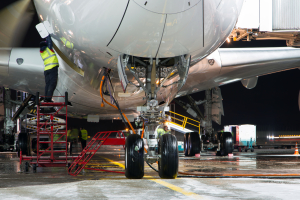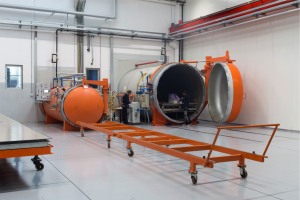Contributing to the development of a new aeronautical composite material
A leading aeronautical equipment manufacturer turned to the experts at Capacités to assist in completing the final stages in the development of their novel composite material.

Key words
Linked expertises
Some of Airbus Helicopters’ metal parts undergo a thermo-chemical hardening treatment called nitriding, and then they are ground with a ceramic abrasive. Problems arise when the surface-grinding operation heats the material; this damages the surface treatment if unmanaged. To avoid this risk, the industrial company needed more precise control over the heat produced from grinding. Airbus Helicopters chose to collaborate with Capacités’ thermal engineers to solve this problem. They worked together to find a way to measure heating directly at the interface between the grinding machine and the part. First, Capacités’ experts conducted a state of the art that highlighted existing solutions at the research stage and technological limitations of the sensors on the market.
After this first level of analysis, that were custom adapted to meet this need.Laboratory tests of the three types of technology led to they worked with Airbus Helicopters’ engineers to design three prototypes of thermal sensors improved precision and response time and minimized the sensors’ intrusiveness.
Finally, the three new sensors were approved in realistic conditions that represented the process. The features and data obtained from this project have proven conclusive – and promising for Airbus Helicopters’ future developments adapted to other types of materials.
To complete this project, the Capacités’ experts benefited from support and technical equipment from the LTeN laboratory (Heat Transfer and Energy Laboratory), joint research unit of Nantes Université and the CNRS.
Our projects
These projects may also interest you

A leading aeronautical equipment manufacturer turned to the experts at Capacités to assist in completing the final stages in the development of their novel composite material.

A key player in the aeronautics sector called on Capacités’s specialists to determine the thermal conductivity properties of a composite material reinforced with short fibers during the injection process.

After having acquired new autoclaves, a certain automobile manufacturer requested Capacités’s services with a view to diagnosing and optimising the production process of its elastomer parts.

As part of its R&D activities, Liebherr Aerospace sought to measure, up to 400°C, the thermal conductivity of a thermal barrier coating, deposited in a thin layer on an aluminium substrate.
This site uses cookies and gives you control over what you want to enable